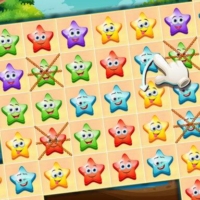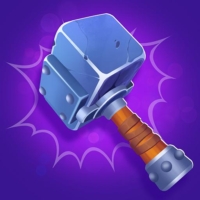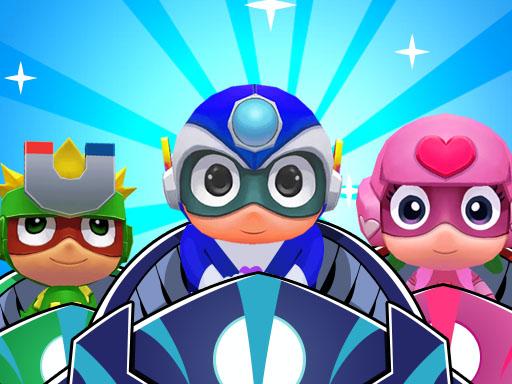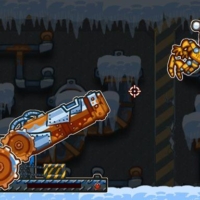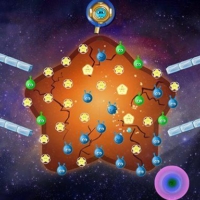New Games
Unlocking
Introduction to Unlocking in Games
Unlocking in video games refers to the process by which players gain access to new features, levels, characters, items, or abilities after meeting certain conditions or completing specific tasks within the game. The concept of unlocking is widely used in gaming to enhance player engagement and provide a sense of progression. It’s often tied to achieving milestones, performing certain actions, or earning rewards based on in-game performance.
In this article, we will explore the different types of unlocking mechanics commonly found in video games, how they work, and why they are an important aspect of game design.
Types of Unlocking in Games
- Unlocking New Levels or Stages:
- In many games, players are required to complete specific objectives or challenges before they can access new levels or stages. For example, in platformers or adventure games, players may need to finish a certain number of missions or collect specific items to unlock a new area to explore.
- This form of unlocking often acts as a way to control the pace of the game, ensuring players progress at a reasonable speed while maintaining a sense of achievement.
- Unlocking New Characters or Avatars:
- Many games, particularly those in the fighting, role-playing, and simulation genres, include a variety of characters or avatars that can be unlocked. Players might need to meet certain criteria, such as completing story arcs, reaching specific levels, or accumulating in-game currency, to unlock these characters.
- Unlocking new characters is often a key motivation for players to continue playing, as it provides variety and new abilities or playstyles to explore.
- Unlocking Achievements or Trophies:
- In modern gaming, unlocking achievements or trophies is a popular mechanic that rewards players for completing specific challenges, tasks, or objectives. These can range from simple actions (e.g., completing a level) to more complex achievements (e.g., defeating a tough boss or finishing the game without dying).
- Achievements serve as milestones that allow players to track their progress and showcase their accomplishments. In some games, unlocking certain achievements can also lead to in-game rewards or bonuses.
- Unlocking New Abilities or Power-ups:
- In many role-playing games (RPGs) or action-adventure titles, players can unlock new abilities, skills, or power-ups as they progress. These abilities can significantly change the gameplay experience, offering new combat techniques, exploration tools, or enhancements to the player’s stats.
- For example, unlocking a new weapon or ability in an RPG can allow players to defeat tougher enemies or access previously inaccessible areas.
- Unlocking Items or Gear:
- Some games feature item or gear unlocking, where players can gain access to powerful weapons, armor, tools, or collectibles by completing challenges or progressing through the game. This is often seen in games with a progression system where players collect or craft items.
- Unlocking special items adds depth and strategy to the gameplay, as players can equip their characters with new gear that enhances their performance.
- Unlocking Cosmetics and Customizations:
- Many games offer the ability to unlock cosmetic items, such as skins, costumes, emotes, or other forms of character customization. These cosmetic items do not impact gameplay directly but allow players to personalize their experience.
- Unlocking cosmetics is often tied to in-game achievements, completing specific challenges, or progressing through certain levels, offering players a sense of pride in showcasing their customizations.
- Unlocking Story Content:
- In narrative-driven games, unlocking new story content can be a key feature. This might involve unlocking new chapters, quests, or dialogue options by making certain choices, reaching specific milestones, or completing side missions.
- Unlocking additional story content provides players with new narrative paths and motivations to explore the game further.
How Unlocking Works in Games
The unlocking system typically involves meeting certain conditions or achieving certain goals. Some common methods include:
- Completing Levels or Missions: In many games, progressing through levels or completing missions will automatically unlock the next stage, characters, or abilities. This method is often used in platformers, puzzle games, or adventure games.
- In-game Currency or Points: Many games allow players to unlock items, characters, or features by spending in-game currency or points. Players can earn currency by completing tasks, earning achievements, or purchasing it with real money in some freemium games.
- Achieving Milestones: Some games feature milestone-based unlocking, where reaching certain milestones—such as completing a specific number of in-game objectives, defeating a boss, or unlocking all levels of a particular skill—unlocks additional content.
- Time-based Unlocking: In some games, certain content is unlocked after a set period of time has passed. For example, daily challenges, timed events, or waiting for a character to level up may gradually unlock new content.
- Unlocking Through Progression: Many games, especially RPGs and adventure games, use progression systems where players unlock new abilities, characters, or items as they level up. For example, a character might need to reach a certain level before new skills or spells become available.
Why Unlocking Is Important in Games
- Increases Replay Value:
- Unlocking features provide players with something to look forward to. By giving players the opportunity to unlock new content, whether it’s characters, levels, or abilities, game developers keep the gameplay exciting and ensure players stay engaged.
- Unlocking encourages players to replay levels or complete optional challenges, leading to longer playtimes and a more satisfying gaming experience.
- Rewards and Motivation:
- Unlocking provides players with tangible rewards that motivate them to continue playing. Whether it’s unlocking a new character, gaining new abilities, or earning an achievement, these rewards serve as recognition for the player’s effort.
- This sense of accomplishment fosters player engagement and encourages them to tackle more challenging aspects of the game.
- Customizable Experiences:
- Many games allow players to unlock customizations such as outfits, skins, and other cosmetic items. This gives players the freedom to personalize their experience and play the game in a way that reflects their style or preferences.
- Customization also allows players to express their identity within the game world, adding a personal touch to their gameplay.
- Pacing and Challenge:
- Unlocking is often used to control the pacing of the game. By requiring players to complete certain tasks before gaining access to new content, developers ensure that players are not overwhelmed early on and have time to master the mechanics before moving on to more complex challenges.
- This creates a satisfying difficulty curve that keeps the game challenging without being too difficult or too easy.
Conclusion
Unlocking mechanics are a key component of modern video games, providing players with rewards, progression, and a sense of accomplishment. Whether it’s unlocking new levels, characters, abilities, or items, these features keep gameplay fresh and exciting, offering players new goals to work toward. By successfully completing challenges, earning achievements, or reaching milestones, players can experience a more fulfilling and engaging gaming experience.
So, the next time you dive into a game with unlocking features, remember to enjoy the process and celebrate the rewards as you unlock new content and experiences!
Instructions
Use mouse or touch the screen!
 Home
Home Popular Games
Popular Games Categories
Categories
